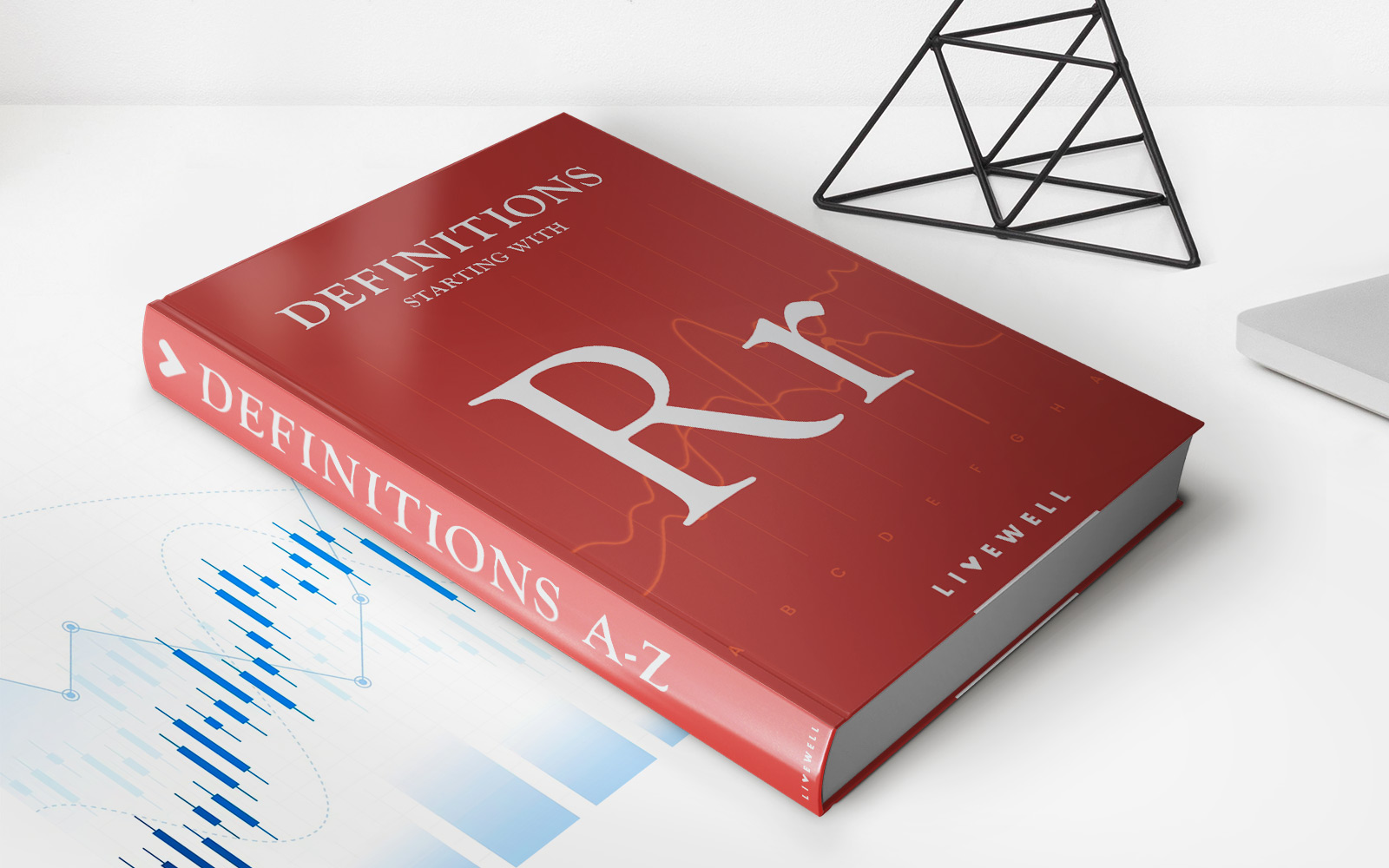Home>Finance>What Happens If I Exceed My Credit Limit With Chase


Finance
What Happens If I Exceed My Credit Limit With Chase
Published: March 5, 2024
Find out the consequences of exceeding your credit limit with Chase and how it can impact your finances. Learn how to manage your credit wisely.
(Many of the links in this article redirect to a specific reviewed product. Your purchase of these products through affiliate links helps to generate commission for LiveWell, at no extra cost. Learn more)
Table of Contents
Introduction
Credit cards are a ubiquitous financial tool in today's world, offering convenience and flexibility for making purchases and managing expenses. However, it's crucial to understand the terms and conditions associated with credit cards, including the concept of credit limits. A credit limit is the maximum amount of credit extended to cardholders by the issuing financial institution. This limit is determined based on various factors, including the cardholder's credit history, income, and other financial obligations.
When it comes to credit limits, Chase is a prominent player in the credit card industry, offering a wide range of cards with varying credit limits. Understanding the implications of exceeding your credit limit with Chase is essential for responsible financial management. In this article, we will delve into the specifics of credit limits with Chase, the potential consequences of surpassing this limit, and actionable strategies for avoiding such scenarios. Additionally, we will explore the associated fees, penalties, and the impact of exceeding your credit limit on your credit score. By gaining a comprehensive understanding of these aspects, you can navigate your credit card usage more effectively and safeguard your financial well-being.
Understanding Credit Limits with Chase
Chase, a leading financial institution, offers a diverse array of credit cards tailored to meet the varying needs of consumers. Each Chase credit card comes with a specified credit limit, which represents the maximum amount of credit that cardholders can utilize. This limit is determined based on an individual’s creditworthiness, income, and other pertinent financial factors. It’s important to note that credit limits can differ significantly among different Chase credit cards, with some catering to individuals with excellent credit profiles and others designed for those with limited credit history or lower credit scores.
Chase provides cardholders with the flexibility to request a credit limit increase, subject to a review of their financial standing. This can be advantageous for individuals seeking greater purchasing power or aiming to improve their credit utilization ratio, a key factor in credit scoring models. Conversely, exceeding the assigned credit limit can lead to adverse consequences, including financial penalties and potential damage to one’s credit score.
Understanding your specific credit limit with Chase is essential for responsible credit card usage. By staying informed about your credit limit and monitoring your spending patterns, you can effectively manage your finances and avoid the pitfalls associated with surpassing the prescribed limit. It’s also important to recognize that credit limits are not static and may be adjusted by Chase based on changes in a cardholder’s financial circumstances or overall credit performance.
Overall, comprehending the intricacies of credit limits with Chase empowers cardholders to make informed decisions regarding their credit card usage, thereby fostering a more secure and sustainable financial future.
Consequences of Exceeding Your Credit Limit
Exceeding your credit limit with Chase can have several adverse consequences that impact both your immediate financial situation and your long-term creditworthiness. When you surpass your credit limit, Chase may impose immediate penalties and fees, which can exacerbate your financial burden. Additionally, the over-limit status can trigger a reassessment of your account terms, potentially leading to increased interest rates and a negative impact on your credit score.
One of the immediate repercussions of surpassing your credit limit is the imposition of over-limit fees by Chase. These fees are charged when you exceed your credit limit during a billing cycle and can range from a fixed amount to a percentage of the overage. The accumulation of over-limit fees can significantly inflate your outstanding balance, making it more challenging to repay the debt and potentially leading to a cycle of escalating financial strain.
Moreover, exceeding your credit limit can trigger a reassessment of your account by Chase, leading to unfavorable adjustments in your account terms. This may include an increase in your interest rate, which can amplify the cost of carrying a balance and further strain your financial resources. Additionally, the over-limit status can serve as a red flag to credit bureaus, potentially resulting in a negative notation on your credit report, which can persist for an extended period.
From a broader perspective, surpassing your credit limit can have lasting implications for your credit score. Credit utilization, the ratio of your credit card balances to your credit limits, is a key factor in credit scoring models. Exceeding your credit limit can inflate your credit utilization ratio, signaling a heightened risk to lenders and potentially leading to a decline in your credit score. This, in turn, can impact your ability to secure favorable terms on future credit products, such as loans and additional credit cards.
Understanding the multifaceted consequences of exceeding your credit limit with Chase underscores the importance of prudent financial management and responsible credit card usage. By staying within your prescribed credit limit, you can mitigate these adverse outcomes and maintain a solid financial foundation.
Fees and Penalties
When you exceed your credit limit with Chase, you may incur a range of fees and penalties that can significantly impact your financial well-being. Understanding these charges is crucial for managing your credit card account effectively and mitigating potential financial strain.
One of the primary fees associated with surpassing your credit limit is the over-limit fee. Chase may levy this fee when you exceed your credit limit during a billing cycle. The over-limit fee amount can vary and is typically added to your credit card balance, compounding the financial repercussions of surpassing your limit. It’s important to review your card’s terms and conditions to ascertain the specific over-limit fee structure applicable to your Chase credit card.
Furthermore, exceeding your credit limit can trigger a reassessment of your account terms by Chase. This may lead to an increase in your interest rate, amplifying the cost of carrying a balance on your credit card. The heightened interest rate can contribute to a more substantial financial burden, particularly if the over-limit status persists over multiple billing cycles. As a result, it’s crucial to be mindful of your credit limit and exercise prudence in managing your credit card expenditures to avoid triggering adverse adjustments to your account terms.
In addition to over-limit fees and potential interest rate increases, surpassing your credit limit can have broader implications for your financial well-being. It can lead to a negative notation on your credit report, signaling to lenders and credit bureaus that you have exceeded your prescribed credit limit. This can impact your credit score and may hinder your ability to access favorable credit terms in the future. As such, the fees and penalties associated with exceeding your credit limit extend beyond immediate financial costs and can have lasting repercussions on your creditworthiness.
By familiarizing yourself with the fees and penalties linked to surpassing your credit limit with Chase, you can proactively manage your credit card account and make informed decisions regarding your financial transactions. This awareness empowers you to navigate your credit card usage responsibly and minimize the financial impact of potential over-limit scenarios.
Impact on Credit Score
Exceeding your credit limit with Chase can have a significant impact on your credit score, affecting your overall creditworthiness and potentially hindering your access to favorable credit terms in the future. Understanding the ramifications of surpassing your credit limit on your credit score is crucial for maintaining a healthy financial profile.
One of the key factors influencing your credit score is your credit utilization ratio, which measures the amount of credit you are using relative to your total available credit. Exceeding your credit limit can inflate your credit utilization ratio, signaling a heightened level of risk to credit scoring models. This can lead to a decline in your credit score, as lenders may interpret a high credit utilization ratio as an indicator of financial stress or imprudent credit management.
Furthermore, the over-limit status on your credit card account can be reported to credit bureaus, potentially resulting in a negative notation on your credit report. This negative notation can persist for an extended period and may be viewed unfavorably by prospective lenders and creditors when assessing your creditworthiness. As a result, exceeding your credit limit can tarnish your credit history and impede your ability to secure favorable terms on future credit products, such as loans or additional credit cards.
It’s important to recognize that the impact on your credit score resulting from exceeding your credit limit is not solely contingent on the overage itself, but also on how you address the situation. Timely and proactive measures to rectify the over-limit status, such as reducing your outstanding balance and bringing it below the prescribed credit limit, can mitigate the negative impact on your credit score. Conversely, allowing the over-limit status to persist and accrue additional fees and interest can exacerbate the repercussions on your creditworthiness.
By understanding the correlation between exceeding your credit limit with Chase and its impact on your credit score, you can adopt prudent financial strategies to safeguard your creditworthiness. This entails monitoring your credit card usage, staying within your prescribed credit limit, and promptly addressing any instances of over-limit status to mitigate potential harm to your credit score.
How to Avoid Exceeding Your Credit Limit
Effectively managing your credit card usage and staying within your prescribed credit limit is essential for maintaining financial stability and safeguarding your creditworthiness. Here are actionable strategies to help you avoid exceeding your credit limit with Chase:
- Monitor Your Spending: Regularly track your credit card transactions and monitor your spending patterns to ensure that you remain within your credit limit. Utilize Chase’s online or mobile banking tools to stay updated on your account activity and set up alerts for approaching your credit limit.
- Utilize Available Credit Wisely: Be mindful of your available credit and utilize it judiciously. Avoid maxing out your credit card, and strive to maintain a credit utilization ratio below 30% to demonstrate responsible credit management.
- Request a Credit Limit Increase: If your financial circumstances have improved, consider requesting a credit limit increase from Chase. A higher credit limit can provide more flexibility in managing your expenses and reduce the risk of inadvertently exceeding your limit.
- Automate Payment Reminders: Set up automatic payment reminders or schedule recurring payments to ensure that you meet your credit card obligations on time. Timely payments can help prevent the accumulation of over-limit fees and mitigate the risk of surpassing your credit limit.
- Communicate with Chase: In the event of impending financial challenges that may impact your ability to stay within your credit limit, proactively communicate with Chase. They may offer assistance or provide guidance on managing your credit card account effectively.
- Review Account Statements: Regularly review your monthly credit card statements to verify your outstanding balance and assess your proximity to the credit limit. This proactive approach can help you identify and address potential over-limit scenarios promptly.
By implementing these proactive measures and exercising prudence in your credit card usage, you can mitigate the risk of exceeding your credit limit with Chase. Responsible financial management not only safeguards your creditworthiness but also fosters a more secure and sustainable approach to utilizing credit cards as a financial tool.
Conclusion
Understanding the dynamics of credit limits and the implications of exceeding them with Chase is integral to responsible credit card usage and effective financial management. By comprehending the potential consequences, fees, and impact on credit scores associated with surpassing your credit limit, you can navigate your credit card usage more prudently and mitigate the risk of adverse outcomes. It is essential to stay informed about your credit limit, monitor your spending, and adopt proactive strategies to avoid exceeding your prescribed limit.
Chase provides a range of resources and tools to assist cardholders in managing their credit card accounts effectively. Leveraging these resources, such as online account management and payment reminders, can contribute to a more secure and streamlined credit card experience. Additionally, maintaining open communication with Chase and promptly addressing any financial challenges can help prevent over-limit scenarios and foster a more favorable financial relationship with the institution.
Ultimately, responsible credit card usage entails staying within your credit limit, utilizing available credit wisely, and addressing any potential overages proactively. By adhering to these principles and leveraging the available tools and resources, you can optimize your credit card experience with Chase and maintain a solid financial foundation. Through prudent financial management, you can effectively harness the benefits of credit cards while mitigating the potential risks associated with exceeding your credit limit.
By adopting these strategies and staying informed about the nuances of credit limits with Chase, you can cultivate a more resilient and sustainable approach to credit card usage, safeguarding your financial well-being and creditworthiness in the process.














